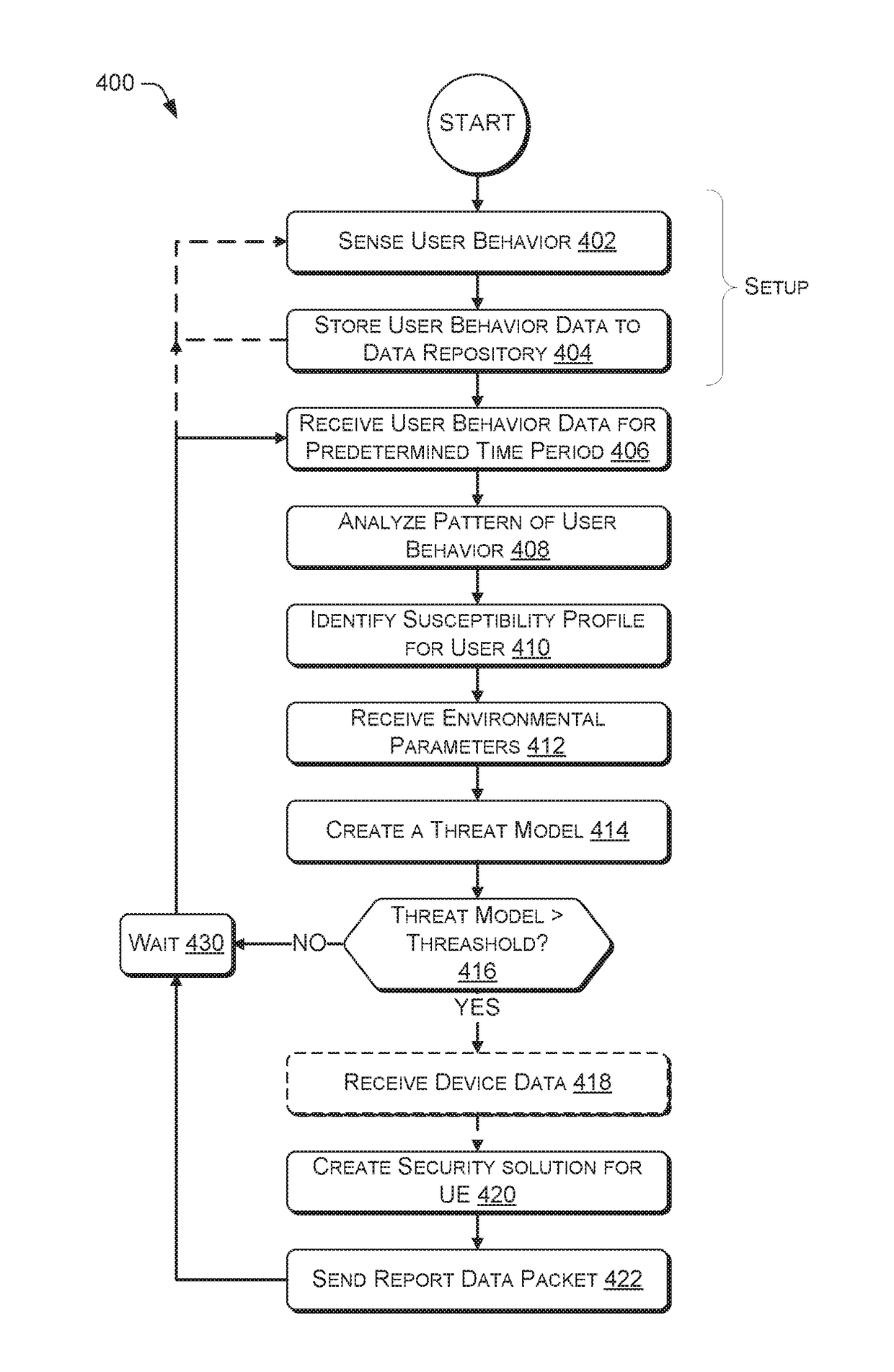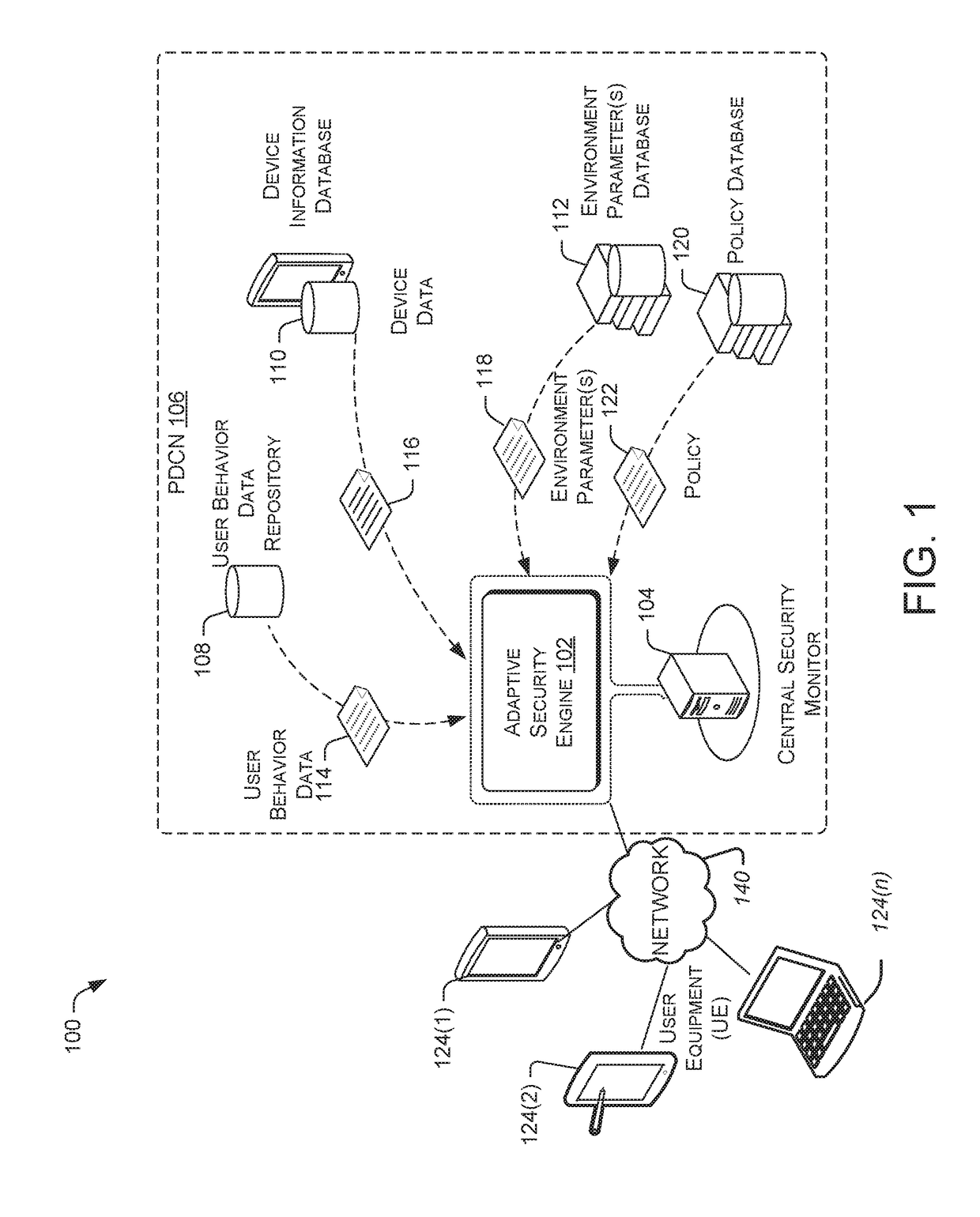Security via adaptive threat modeling
a threat modeling and adaptive technology, applied in the field of security via adaptive threat modeling, can solve the problems of affecting the security of public internet, and affecting the security of different types of users, and affecting the security of applications. different types of users may be more vulnerable to different types of security attacks
- Summary
- Abstract
- Description
- Claims
- Application Information
AI Technical Summary
Benefits of technology
Problems solved by technology
Method used
Image
Examples
example architecture
[0014]FIG. 1 illustrates an example architecture 100 for implementing an adaptive threat modeling security system for a subscribed user. Architecture 100 includes a network 140 that may allow various user equipment (UE) 124(1) to 124(n) to communicate with each other as well as any other components that are connected to the network 140. The network 140 may be, without limitation, a local area network (“LAN”), a virtual private network (“VPN”), a cellular network, the Internet, or any combination thereof. To facilitate the present discussion, network 140 will be described, by way of example only and not by way of limitation, as a mobile network as may be operated by a carrier or service provider to provide a wide range of mobile communication services and ancillary services or features to its subscriber customers and associated mobile device users. Network 140 allows users of the user equipment (e.g., customers or subscribers to the network 140), to send information to and receive in...
example processes
[0063]With the foregoing overview of the architecture 100, the user equipment 200, and the adaptive security engine 320, it may be helpful now to consider a high-level discussion of an example process. To that end, FIG. 4 presents an illustrative process 400 for providing adaptive threat security for a user. Process 400 is illustrated as a collection of blocks in a logical flow chart, which represents a sequence of operations that can be implemented in hardware, software, or a combination thereof. In the context of software, the blocks represent computer-executable instructions that, when executed by one or more processors, perform the recited operations. Generally, computer-executable instructions may include routines, programs, objects, components, data structures, and the like that perform particular functions or implement particular abstract data types. The order in which the operations are described is not intended to be construed as a limitation, and any number of the describe...
PUM
 Login to View More
Login to View More Abstract
Description
Claims
Application Information
 Login to View More
Login to View More - R&D
- Intellectual Property
- Life Sciences
- Materials
- Tech Scout
- Unparalleled Data Quality
- Higher Quality Content
- 60% Fewer Hallucinations
Browse by: Latest US Patents, China's latest patents, Technical Efficacy Thesaurus, Application Domain, Technology Topic, Popular Technical Reports.
© 2025 PatSnap. All rights reserved.Legal|Privacy policy|Modern Slavery Act Transparency Statement|Sitemap|About US| Contact US: help@patsnap.com



